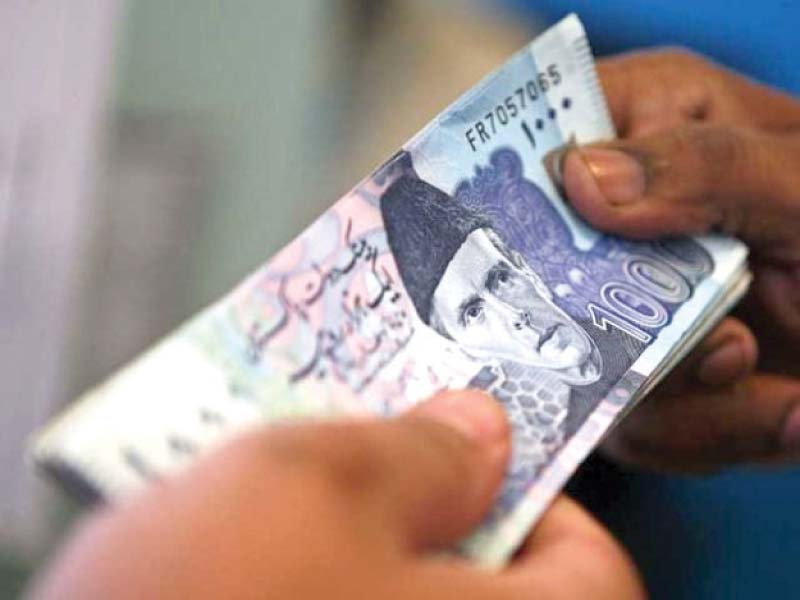
The finance ministry on Wednesday borrowed Rs8.6 billion through 10-year Pakistan Investment Bonds (PIB) at a fixed interest rate of 13.12%, which is one of the highest returns in recent years. The cost that the ministry will pay is 2.8% higher than the treasury bill rates.
This has heightened market expectations for a further hike in interest rate by the State Bank of Pakistan in the next monetary policy announcement.
The federal cabinet on Thursday also approved new rules to allow the central bank to accept Bai Muajjal papers of Islamic banks as security instruments, accepting their longstanding demand. After the decision, the SBP can accept Bai Muajjal, an Islamic debt instrument, as approved securities for statutory liquidity ratio (SLR) purposes.
Before this change, the Islamic banks did not have any option but to sell some of their excess liquidity to the federal government, which allowed the Ministry of Finance to raise debt at low rates. This move will free Islamic banks from dependence on the finance ministry for parking their excess liquidity.
The federal cabinet’s decision would help Islamic banks mobilise their deposits and would bring them on a par with conventional commercial banks, said Finance Minister Asad Umar on Saturday.
He said Islamic banks had excess liquidity of over Rs600 billion and the rule change would allow them to channelise that money. The minister said various surveys showed that people wanted to invest in Islamic instruments, which would also help achieve the overall objective of enhancing the current low savings rate in the country.
In the last PIB auction held on Wednesday, the total borrowing through three-year, five-year and 10-year PIBs was only Rs16 billion against the target of Rs150 billion. Three-year PIBs were issued at 12.19% and five-year at 12.7%.
The policy rate of the central bank is 10% after the recent hike. However, on October 17 this year, the finance ministry rejected Rs93.5 billion worth of bids for 10-year floating-rate PIBs. Banks had offered funds at the six-month weighted average treasury bill rate plus 0.95%.
The government had introduced floating-rate bonds of 10 years aimed at mitigating refinancing risk of the government.
Historically, the difference between treasury bills and 10-year PIBs remained around 2% except for a few occasions, according to the people involved in treasury bill auctions.
The federal government remains the largest client of commercial banks due to a widening gap between its expenditures and revenues. For the current fiscal year, the revised budget deficit is expected to reach Rs2.4 trillion or 6.1% of gross domestic product, if no additional revenue measures are taken, according to an internal assessment of the finance ministry.
However, the ministry has defended its decision to invest in 10-year papers at a higher rate. The successful auction of PIBs at a competitive interest rate of 12.74% per annum for an amount of Rs16.7 billion was expected to stabilise market interest rate in longer-tenor papers of the government in subsequent auctions, said Dr Najeeb Khaqan, the spokesman for the finance ministry.
Khaqan said it was a move by the government to diversify its borrowings towards longer-tenor PIBs. “It will reduce the burden of government borrowing from the SBP and will reduce the rollover and re-pricing risk of shorter-term marketable government debt,” he added.
It was expected that participation of banks in primary auctions of government securities, particularly in longer-tenor PIBs, would improve in the future, Khaqan said.
But the decision to accept long-term bids at a fixed rate, when interest rate is expected to hit its peak, is likely to add to the cost of debt servicing which is set to hit Rs2 trillion by the end of current fiscal year. In 2014, when the interest rate had peaked at 10%, the banks heavily invested in long-term PIBs and were still reaping benefits.
The only notable change between October 2018 and December 2018 auctions was negotiations with the International Monetary Fund (IMF) that took place in November. During staff-level talks with Pakistan in October, the IMF had urged the finance ministry to borrow through fixed PIBs instead of floating exchange rates, according to sources in the finance ministry.
Currently, there is no director general of the Debt Management Office and the budget wing of the finance ministry is taking decisions on borrowing without involving the debt office. On December 14, the government had also held an auction to raise debt from Islamic banks. Despite giving them higher rates, the Islamic banks invested only Rs72.5 billion at the treasury bill rate plus 1.2%.
The finance ministry spokesman said in August 2018, the government accepted bids of over Rs100 billion for 10-year floating PIB at a price of six-month MTB plus 70 basis points.
But on October 17, 2018, the auction participation was Rs93 billion with 99% of the bids placed at a margin of 80-140 bps over the six-month T-bill. “Acting prudently, the Ministry of Finance rejected this auction. If the ministry were to accept such bids, it would have meant that for the next 10 years, the government would be paying this margin to banks, even at the time when the interest rate cycle looks to have peaked,” he added.
Published in The Express Tribune, December 30th, 2018.
Like Business on Facebook, follow @TribuneBiz on Twitter to stay informed and join in the conversation.









































COMMENTS
Comments are moderated and generally will be posted if they are on-topic and not abusive.
For more information, please see our Comments FAQ